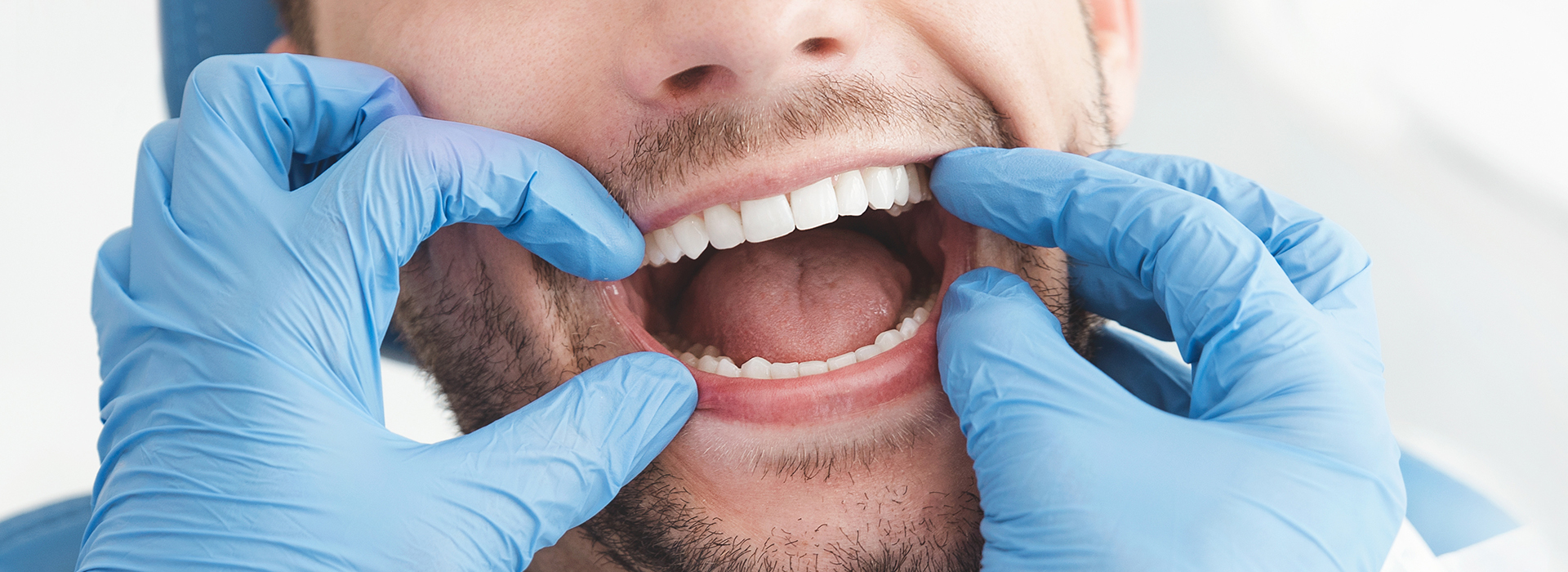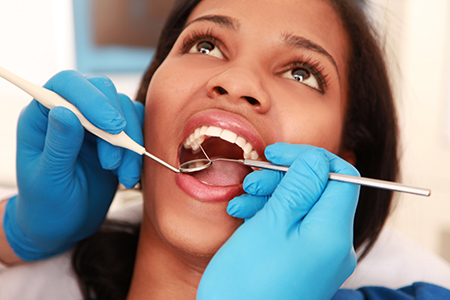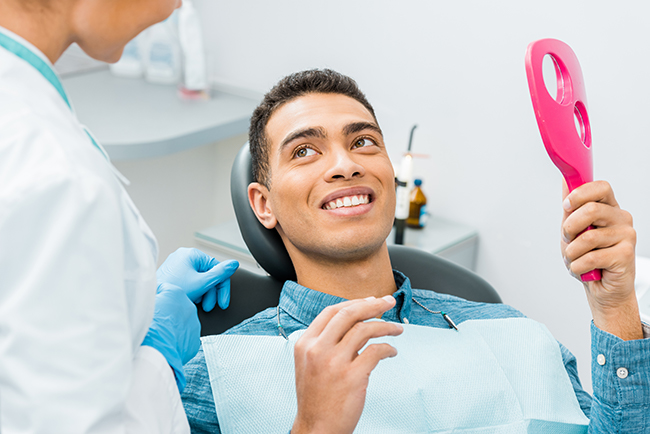
At the office of Lesley Holloway the Dentist, we take a forward-looking approach to oral health that emphasizes prevention, early detection, and patient education. Regular oral exams are the single best way to catch small issues before they become complex problems — from cavities that can be repaired conservatively to early signs of gum disease or other conditions that affect overall wellness. Our care model blends careful clinical assessment with clear explanations so patients leave appointments knowing both their current status and the steps to protect their smile.
Every visit is an opportunity to build a health record and a partnership. During an exam we review medical and dental history, listen to your concerns, and perform a systematic assessment of teeth, gums, jaw function, and soft tissues. When appropriate, we supplement the clinical exam with diagnostic imaging and targeted screenings so that treatment decisions rest on reliable information rather than guesswork.
A comprehensive oral exam begins with conversation: we’ll go over recent medical changes, medications, and any symptoms you’ve noticed, such as sensitivity, soreness, or difficulty chewing. This background helps us recognize how systemic conditions or prescriptions might affect oral tissues and healing. We then move into a step-by-step clinical inspection designed to leave no area unassessed.
The hands-on assessment covers the teeth, gum tissues, tongue, palate, and the inside surfaces of the cheeks and lips. We look for decay, worn or fractured restorations, plaque buildup, and early signs of gum inflammation. Bite and jaw function are evaluated for signs of clenching, grinding, or TMJ dysfunction that can lead to headaches, tooth wear, and discomfort over time.
Oral cancer screening is an important component of every exam. Our clinicians systematically examine the mouth, throat, and neck for any unusual lumps, red or white patches, or persistent sores and will recommend follow-up or referral when warranted. If further evaluation is needed, we discuss options and explain the next steps in plain language so patients can make informed choices.

Oral tissues often mirror what’s happening elsewhere in the body. During an exam we pay attention to signs that might indicate broader health concerns — persistent dry mouth, unusual oral lesions, severe gum inflammation, or rapid changes in dental health can all point to systemic issues. By noting these clues early, we help patients and their medical providers connect the dots and pursue appropriate care.
Research increasingly shows links between oral inflammation and conditions such as diabetes or cardiovascular disease. While an exam does not replace medical evaluation, it provides valuable information that can prompt further testing or lifestyle changes. We communicate findings clearly so patients understand why a particular observation matters and what actions might follow.
We also consider how medications, diet, and habits affect oral health. Certain prescriptions can reduce saliva flow, increasing risk for decay; high-sugar diets or acidic beverages can accelerate enamel erosion; and habits like tobacco use have well-documented oral consequences. Identifying these factors allows us to recommend practical, individualized strategies to lower risk and preserve oral function.

Routine checkups and professional cleanings are the backbone of preventive dentistry. Even the most diligent home-care routines can leave deposits of plaque and tartar in tight spaces that only a trained hygienist can remove safely. Regular cleanings reduce the bacterial load that leads to cavities and periodontal disease, and they help maintain fresh breath and a bright smile.
Checkup visits also let us monitor changes over time. Small spots of enamel demineralization, early gum recession, or shifting tooth positions are easier and less invasive to address when detected early. For children and adolescents, these visits are a chance to track growth and development, discuss preventive treatments like sealants or fluoride, and identify orthodontic needs before problems progress.
Education is a key part of each visit. Our team demonstrates effective brushing and interdental cleaning techniques, recommends tools suited to each patient’s needs, and outlines simple dietary habits that support oral health. Empowering patients with practical guidance helps them get the most benefit from every checkup.
We tailor recall schedules to the individual. While twice-yearly visits are common, some patients benefit from more frequent monitoring due to a history of gum disease, high decay risk, or certain medical conditions. These personalized plans help us keep small problems from becoming large ones.
Many aspects of dental health are hidden below the surface; radiographs reveal the roots, bone support, developing teeth, and areas between teeth that visual inspection alone cannot show. We use imaging selectively to answer clinical questions — for example, whether a suspicious dark spot is an active cavity, whether bone levels support healthy teeth, or whether additional evaluation is needed for unexplained pain.
Digital radiography has transformed how images are captured, shared, and stored. Compared with older film techniques, digital sensors require lower radiation doses, produce instant images, and integrate seamlessly into electronic health records. We use these images as diagnostic tools and to help patients visualize and understand their oral condition during consultations.
In certain situations, three-dimensional imaging (CBCT) provides a more complete picture. CBCT can be essential for complex treatment planning, surgical evaluations, and precise placement of dental implants. When a 3D view adds meaningful diagnostic value, we explain why it’s recommended and how it supports a safer, more predictable outcome.

Different radiographs serve distinct diagnostic roles. A periapical image focuses on a single tooth from crown to root and is useful for assessing root health, infections, or trauma. Bitewing films capture the crowns of several adjacent teeth and are excellent for finding early decay between teeth and checking the fit of restorations.
A full-mouth series combines bitewing and periapical views to give a thorough baseline of all teeth and supporting bone. Panoramic films provide a broad, two-dimensional view of the entire upper and lower jaws — a useful overview for evaluating impacted or developing teeth and general jawbone health. Cephalometric radiographs offer a profile view used primarily in orthodontic assessment and treatment planning.
Three-dimensional CBCT imaging gives detailed cross-sectional views that are particularly valuable for surgical planning, implant placement, and evaluation of complex anatomy. Because each type of image has specific indications, we recommend the minimal imaging necessary to reach a confident diagnosis and plan safe, effective care.
Together, clinical examination and appropriate imaging form a reliable foundation for early detection and conservative treatment. By combining careful visual assessment, targeted radiographs, and open communication, we help patients maintain healthy, functional smiles for life.
Summary — Regular, thorough oral exams are the cornerstone of lasting oral health. They allow our team to detect problems early, coordinate care with medical providers when needed, and provide patients with clear, actionable guidance. If you have questions about what an oral exam entails or want to learn how we can help protect your smile, please contact us for more information.
A comprehensive oral exam begins with a review of your medical and dental history and a conversation about any new symptoms or concerns. The clinician performs a systematic inspection of teeth, gum tissues, tongue, palate, cheeks, lips, and surrounding muscles to look for decay, inflammation, unusual lesions, wear, or signs of infection. Bite and jaw function are assessed to identify clenching, grinding, or TMJ-related problems that can affect comfort and long-term tooth health.
The exam often includes targeted screenings such as an oral cancer check and may be supplemented with diagnostic imaging when needed to see between teeth or below the gumline. Findings are documented in your chart and explained in clear terms so you understand the significance of any observations. When appropriate, the clinician outlines next steps, which can range from preventive measures to referrals for additional care.
For many people, a routine oral exam every six months is a sensible schedule because it allows early detection of cavities, gum disease, and other developing concerns. Individuals with higher risk factors—such as a history of periodontal disease, frequent decay, certain medical conditions, or medications that reduce saliva—may need exams every three to four months for closer monitoring. Your age, oral hygiene, diet, and lifestyle habits also influence how frequently visits should occur.
At Lesley Holloway the Dentist we tailor recall intervals to each patient’s needs based on clinical findings and risk assessment rather than applying one standard interval for everyone. Personalized schedules help catch small problems early and reduce the need for more invasive treatment later. If your health status changes, we reassess the recall plan to keep prevention and monitoring aligned with your current needs.
Oral tissues often reflect broader health issues because signs such as persistent dry mouth, unusual oral lesions, severe gum inflammation, or rapid changes in dental health can be linked to systemic conditions. During an exam clinicians look for these clues and consider how medications, chronic illnesses, or nutritional factors might be contributing to oral findings. Noting these patterns early can prompt further medical evaluation or lifestyle adjustments that benefit both oral and general health.
When exam findings suggest a possible systemic concern, the dental team communicates clearly with the patient and, with permission, coordinates care with medical providers. This collaborative approach helps ensure that oral observations are put into the right clinical context and that patients receive comprehensive follow-up when needed. The goal is to use oral exams as a window into whole-body wellness rather than treating the mouth in isolation.
An oral cancer screening is a routine part of every comprehensive exam and involves a careful visual and tactile inspection of the mouth, throat, and neck. The clinician checks for persistent sores, red or white patches, lumps, or areas of tissue that look or feel abnormal and asks about symptoms such as difficulty swallowing, unexplained bleeding, or numbness. Any suspicious finding is documented and explained so patients understand why follow-up is recommended.
If further evaluation is warranted, the clinician will discuss next steps which may include closer monitoring, adjunctive testing, referral to a specialist, or a biopsy performed by the appropriate provider. Early detection significantly improves outcomes, so clinicians emphasize timely follow-up and clear communication about signs that should prompt an immediate return visit. Patients are also counseled on risk-reducing behaviors, such as tobacco cessation and limiting alcohol intake.
Dental X-rays are used selectively to answer specific clinical questions that cannot be resolved by visual inspection alone, such as detecting decay between teeth, assessing root health, or evaluating bone levels around teeth. Common types include bitewing images for interproximal decay, periapical films for individual tooth roots, panoramic views for overall jaw assessment, and CBCT for three-dimensional evaluation when complex anatomy or surgical planning is required. The choice of image type depends on the clinical situation and the diagnostic information needed.
Digital radiography minimizes radiation exposure compared with older film techniques and provides instant images that aid diagnosis and patient education. Clinicians recommend the minimal imaging necessary to reach a confident diagnosis and to guide safe, effective care. If additional or advanced imaging is suggested, the rationale and benefits are explained so patients can make informed decisions about their treatment path.
Evaluation of jaw function includes observing range of motion, listening and feeling for joint noises such as clicking or popping, and palpating muscles for tenderness or tightness. The clinician examines tooth surfaces for wear facets, checks for short-term or long-term changes in bite, and asks about symptoms like jaw pain, headaches, ear pain, or difficulty opening and closing the mouth. These assessments help determine whether clenching, nighttime grinding, or a temporomandibular disorder is contributing to a patient’s symptoms.
Treatment recommendations are individualized and may include behavioral strategies, night guards to reduce tooth wear, physical therapy referrals, or targeted dental adjustments when indicated. Conservative measures are typically attempted first, and patients are monitored for improvement over time. When necessary, the dental team coordinates with specialists to develop a multidisciplinary plan that addresses both pain control and functional restoration.
Preparation for an oral exam is straightforward: bring an up-to-date list of medications, note any recent medical changes or new symptoms, and be ready to discuss your home care routine and dietary habits. If you have recent medical records, specialist reports, or a history of dental treatment elsewhere, bringing that information can help the clinician build a complete health record. Patients who experience dental anxiety should mention it when scheduling so the team can offer support and explain options that increase comfort.
Avoid eating anything that causes strong odors immediately before your appointment if you prefer, and continue your normal oral hygiene unless otherwise instructed. Allow extra time if you anticipate needing radiographs or if you have multiple concerns to discuss, as a complete exam and consultation can take longer than a quick check. Clear communication about expectations helps the visit run smoothly and ensures you leave with a practical plan.
Preventive recommendations are tailored to each patient and can include professional cleanings, fluoride applications, dental sealants for eligible teeth, and personalized home care advice. The clinician may suggest specific brushing and interdental cleaning techniques, recommend tools suited to your needs, and outline dietary adjustments to reduce acid and sugar exposure that accelerates decay. For patients with dry mouth or other risk factors, targeted strategies are provided to manage those conditions and lower future risk.
Behavioral counseling—such as guidance on tobacco cessation, reducing alcohol intake, and modifying harmful habits—is offered when relevant because lifestyle choices have a direct impact on oral health. Recall schedules are adjusted according to risk, with more frequent visits for those who need closer monitoring. Education is an important part of each visit so patients understand the rationale behind recommendations and can participate actively in prevention.
Oral exams for children emphasize growth and development, monitoring tooth eruption, jaw alignment, and the early identification of orthodontic needs. Clinicians assess for decay risk, discuss preventive treatments such as sealants and topical fluoride when appropriate, and provide age-appropriate hygiene instruction to help establish lifelong habits. Behavior management and a gentle approach help make visits positive and reduce dental anxiety in younger patients.
For older adults, exams focus on issues that become more common with age, including root decay, gum recession, dry mouth related to medications, and the fit and condition of dentures or prosthetic work. Care plans often involve closer coordination with medical providers to account for chronic conditions and medications that affect healing and oral tissues. Prevention and monitoring are emphasized to preserve function and quality of life.
Coordination begins with clear documentation and open communication; when oral findings suggest a systemic issue or require medical input, the dental team discusses the concern with the patient and, with consent, shares relevant information with the patient’s physician or a dental specialist. Referrals are made when additional diagnostic testing or specialized treatment is needed, and clinicians follow up to integrate recommendations into the patient’s dental care plan. This collaborative approach helps ensure that oral observations inform broader health decisions.
At the office of Lesley Holloway the Dentist we prioritize timely, respectful communication and provide clear explanations so patients understand why coordination is suggested and what to expect. Records and images are shared securely as permitted, and the dental team participates in shared decision-making to align treatment priorities across providers. The goal is seamless, patient-centered care that addresses both oral health and overall well-being.
Quick Links
Contact Us